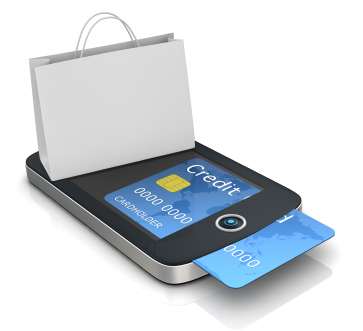Battle for the mobile payment market – Players and Forecasts 10/2012
Payment by mobile phone is driven by many actors: Telcos, PayPal, Google and credit card operators are the front runners for this upcoming service. But what are the driving forces?
Technology – Today Near Field Communication (NFC) is a part of almost every new smartphone. In addition NFC technology has the ability to transform smartphones into virtual wallets, where users pay for transactions simply by waving their phone at an appropriate receiver terminal. However, it also has much wider applications, allowing for synchronized content and services across the mobile ecosystem. The reward for owning this relationship in the mobile space is enormous, and as a result everyone, from mobile operators to device manufacturers, is fighting for a share. The industry message seems clear; mobile payments will be big over the next five years – big news and big profits. The technology has been around in various forms for years and, now that leading names such as Apple, Google and RIM are designing and manufacturing NFC-equipped devices, many commentators predict that mobile payments will skyrocket. Today mayor Telcos seek to secure mobile payment transactions. Industry giants such as: Visa and MasterCard are pushing contactless readers in the market. Nevertheless, in Germany mobile money moves much slower than in countries like Kenya and Afghanistan. At the Round Table of the Finance Forum Germany industry representatives discussed the sedate start, and the really important players in the field of mobile payments.
Intuitions – Banks- In fact, it does not look like traditional banks would promote mobile payment. The big banks and savings banks are holding back and are limited to the operation of customer accounts. The Carriers- The logical market power in mobile payments are the mobile phone companies. The advantages are obvious: They often have a long-standing relationship with customers and enjoy at least as much confidence that they can access customer accounts. They also have more or less direct influence on the units sold, they can individualize products specifically supported.On the other hand participants believe that the telecom operators are looking for long-term banks as partners with whom they can have them pay. These financial partners must not be the traditional financial institutions. Similarly, such as commercial banks have emerged in the automotive industry from actually completely non-banking companies, it could also open up new financial institutions in other industries.
Consumers – It’s all very well having a shiny new technology offer, but, if no-one has access to it, then its days are numbered. It’s also important to remember that industry buzz does not necessarily correspond with actual consumer uptake.As I write, only a handful of smartphones on the market come NFC-equipped as standard. The Google-branded Nexus S is the most well-known, but this feature is dormant in any practical sense until an overarching payments structure is in place. Of course, more handsets with NFC capabilities will appear throughout the year, so the potential user base will increase. Nevertheless, at the end of 2010, smartphone ownership among the GB adult population was 22% (increasing to 37% among males under 35) [5], so, while already substantial and continually on the rise, access to mobile payments technology cannot be assumed universal for some time yet.Moreover, handsets are only a part of the story, since they all require an operator network to fully function – and throwing operators into the mix adds to the complexity of the structure. The reason is simple: if handset manufacturers need the operators to make mobile payments a reality, then the operators will expect a cut of the revenue made. This would be a moot point if manufacturers and operators agreed on how best to implement the technology but, tellingly, they don’t.
Conclusion – Mobile payments will be big news over the next few years – that much seems certain. However, in witnessing the mobile industry gearing up to push NFC technology into the mainstream, it would be wise for onlookers to consider that consumer adoption could be considerably slower than predicted. To function, a mobile payments network requires agreement and co-ordination between a number of parties, each with slightly different motivations and priorities. Manufacturers, operators and their financial partners will all need to negotiate with each other in order to produce a single integrated offer. Once achieved, they will then need to promote that offer effectively to their customers, providing a convincing argument for how this will benefit them in their daily lives. The real advantages of NFC are the integrated solutions it can offer – bringing together numerous applications all in one device to empower the user. However, it is this very integration that leads to greater personal risks, and if we are going to shout about the benefits, then we can’t ignore the dangers. As mobile payments technology develops, brand trust will become extremely important, because personal information will be pushed further and further away from its traditional domain. Instead of the big financial institutions calling the shots, it could instead be O2, Orange, Google and Apple. Right now it’s not clear who will emerge as leaders and who will be the followers.
Trustfund Media – A member of Trustfund Group, Switzerland
Original article by : Nick Peppiatt – Nick is a Research Manager in the Connect team at GfK NOP

